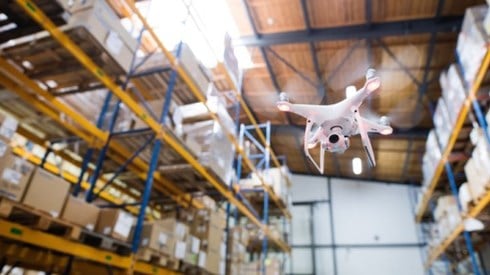AI and Captive Insurance: What Does the Future Hold?

August 27, 2018

Last month, we looked at various technologies and their impact on the insurance industry in "Innovation and Productivity in Captive Insurers." We said in the article that "[i]t is imperative for captive insurers to be aware of how these technologies are reshaping the insurance industry." Some recent news prompted us to revisit artificial intelligence (AI) and captive insurance, one of the three technologies discussed in the previous article. Most readers would probably agree that the insurance industry is not known for its cutting-edge leadership in technology. But trends in other financial services, as well as within this industry, provide some guidance around what the future may hold for AI and captive insurance.
In the August 18, 2018, Wall Street Journal article "Wall Street Erases the Line Between Its Jocks and Nerds," Liz Hoffman and Telis Demos encapsulated the story with the following subtitle.
There used to be a strict hierarchy: Traders made money and won glory while programmers wrote code and stayed out of sight. Those days are over.
AI, composed of algorithms and created by programmers, now does most of the job traders used to perform. Code is also being used to supplement the job risk officers perform in helping monitor the overall positions of the bank and providing an early warning system on risk within the overall system.
Closer to home, the Wall Street Journal also ran a recent interview with Paul Wilson, Farmers Insurance Group's chief information officer. One of his direct reports, Rehan Ashroff, director of the Farmer's innovation lab, seeks to implement AI for quicker claims processes, which would eliminate much of the routine work for Farmer's 10,000-plus claims employees. If this is successful, Mr. Ashroff believes AI can be used to resolve basic customer claims in hours instead of days.
A similar change is occurring on the underwriting front. KPMG released a report, Enabling the Future of Underwriting, where the final section looks at an underwriter's future role. According to KPMG, "The role of the underwriter of the future will be that of a 'collaborator' of the end-to-end process, who completes quick and accurate policy decisions in a more cost-effective manner. The role of the underwriter of the future will emerge as a custodian and integrator.
- "An underwriter is likely to emerge as a custodian of the overall underwriting process rather than as an actual task performer.
- "An underwriter will be an integrated profit-and-loss professional who will be assisted by automated repeatable tasks and analytics-based decision-making.
- "An underwriter's role will be primarily to resolve any escalations with the help of the artificial-intelligence-based system. The number of these instances will decrease gradually."
On a personal note, as a member of the audit committee for a regional property-casualty company, this editor has experienced AI's increased prevalence as an auditing tool within insurance. At a recent meeting, the company's external auditor spoke at length about how the audit firm is employing AI to both plan and assist in audits. For instance, AI now allows audit firms to perform analysis by looking at every transaction versus having to select data samples. AI then recommends which accounting entries the audit team should look at more closely.
So what does this mean for captive insurers? From our vantage point, it will depend on the type of captive insurer. For large single-parent captives, AI will become an integral part of how the captive is managed in a fairly short time frame. We base this opinion on the fact that large corporate entities, which own these captives, are already building and using AI in many of their operations. If these entities are using outside professional service providers, it is also likely that these vendors are exploring and beginning to implement AI solutions, not unlike the audit firm example from above.
For group captives, risk retention groups, and cell captives, we foresee a more disparate adoption of AI. This conclusion is based on the fact that third-party captive managers operate many of these captives. As noted in last month's article, "large companies are benefiting to a much greater degree than their smaller brethren, and the spread of technological advances from larger to smaller firms has slowed and even dissipated." Assuming this statement to be correct, many of the smaller captive managers are not making the same investment into this technology as their larger brethren. Some captives will benefit, while others will not.
AI adoption is occurring faster and sooner than anticipated within the insurance industry. For some captives, this can become a competitive disadvantage. The use of AI has the ability to do three things from our perspective.
- Speed up the decision-making process, thereby enhancing the relationship with customers/policyholders
- Allow for greater risk differentiation and better risk selection, potentially reducing overall claims expense
- Reduce general and administrative costs as AI assumes the responsibility for performing the mundane tasks within operations currently performed by people
For these reasons alone, captive owners and captive boards should be asking themselves and their service providers about how they can begin to harness this technology.
August 27, 2018





